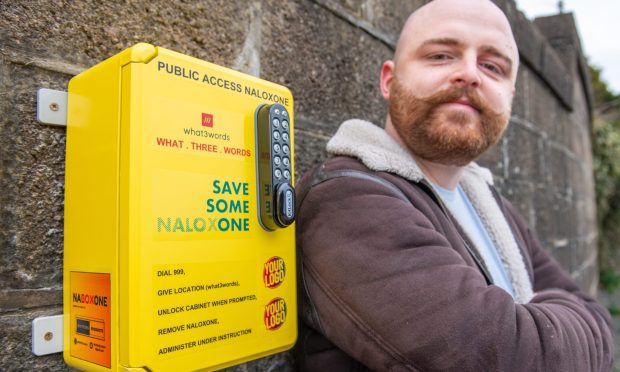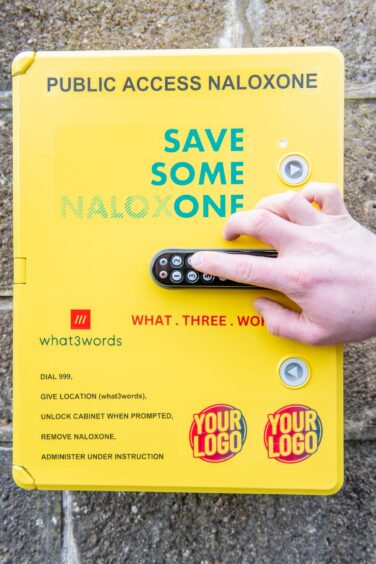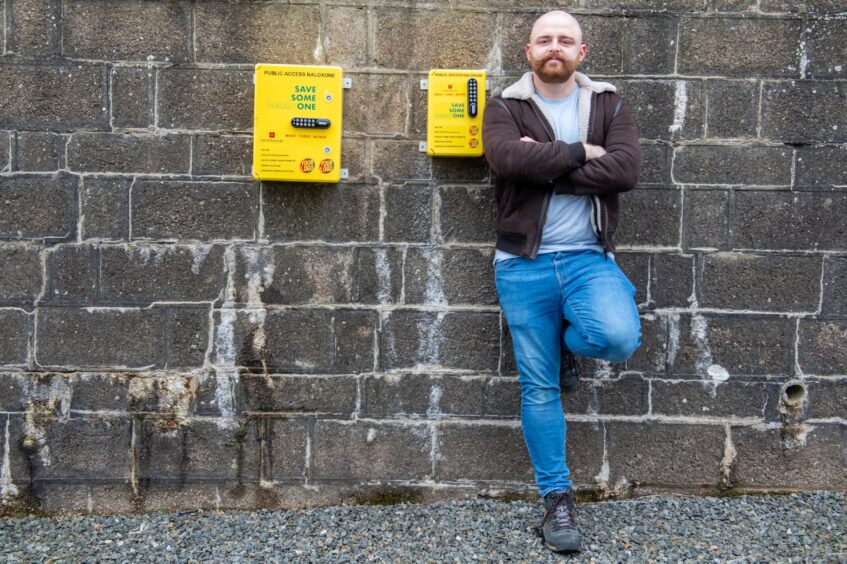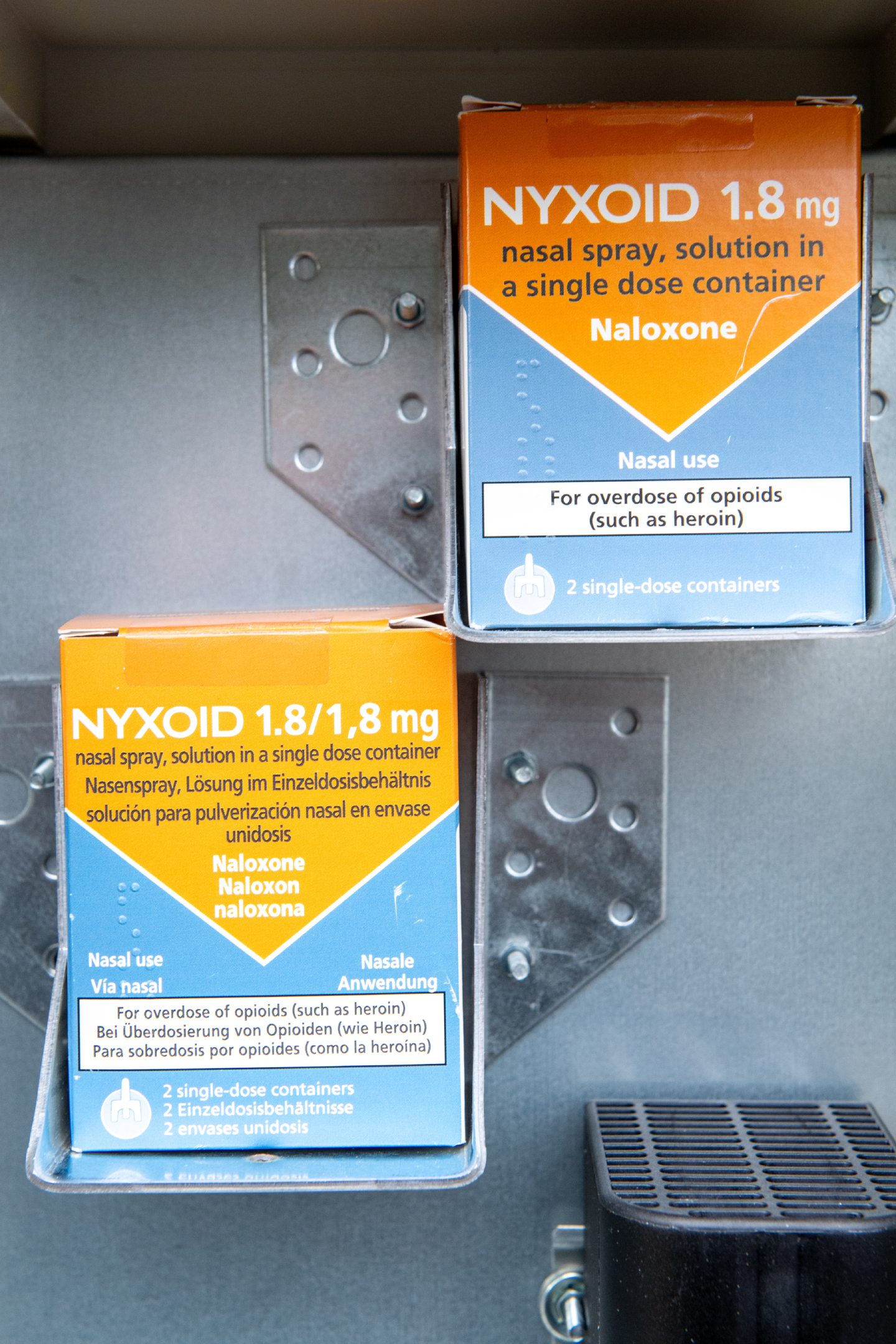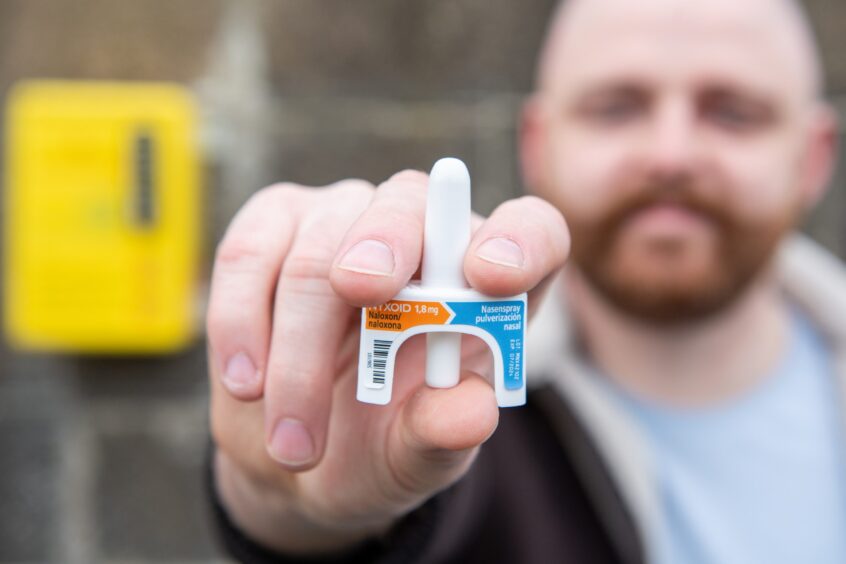Keep your eyes peeled for a bright yellow box on the streets of Aberdeen.
It might just help you save someone’s life.
The cabinet contains an easily-administered nasal spray of naloxone, a drug that reverses the effects of an opiate overdose and allow time for emergency services to arrive.
Ten of these distinctive code-locked cabinets will be installed across Aberdeen over the next few weeks in a world-leading trial that could see them one day cover the UK.
They are the brainchild of Balmedie paramedic Kieran Whitford, who hopes the boxes can reduce Aberdeen’s worryingly high number of drug deaths.
Meanwhile, Kieran warns the boxes could be even more critical as a coming influx of synthetic drugs look to make opiate overdoses more common, even among recreational users.
According to experts, drug dealer are swapping out party drugs such as cocaine and MDMA with synthetic drugs, which are cheaper to make and much stronger.
This puts lives at risk. Fentanyl, for example, which has already left a trail of deaths and overdoses in the US, is 50 times stronger than heroin.
Kieran explains: “People have no idea that the drug they are taking is so strong and is an opiate. It’s wild.”
Where will the boxes be installed?
Kieran, who is originally from Northfield, is targeting areas with the highest number of overdoses, though exact locations have not yet been decided.
He also hopes to place them in community centres and other hubs, similar to defibrillator boxes that are already a common sight in communities.
Meanwhile, he is in talks with the Scottish Ambulance Service so the boxes will be mapped in the same way as the national defibrillator network. This will allow 999 call handlers to issue an access code to open the nearest box.
The venture is world-beating — the US has some public-access naloxone boxes, but the Aberdeen versions will be the first to be linked to the emergency services network.
Kieran adds: “The biggest win will be knowing that these are right there and that that they’re saving lives.”
Bid to curb the Scotland’s high number of drug deaths
The public-access naloxone boxes are only possible because of Scotland’s world-leading efforts to make the emergency treatment as widely available as possible.
More than 150,000 take-home naloxone kits have been issued since a national, naloxone programme began in 2011 and last year Police Scotland completed a roll-out of naloxone to all officers, ahead of the rest of the UK.
The efforts are all a bid to curb the Scotland’s high number of overdoses deaths. The country’s overall drug death rate is more than three times higher than the next worst-affected European nation, according to the latest European Drug Report.
Kieran says Aberdeen and the north-east is his priority, but he hopes public-access boxes will eventually roll out to the rest of the UK, and even further.
The project is a business venture, and Kieran is distributing the boxes through his own company, Whitford Products, charging between £450 and £585 for each one.
His ambitions have come a long way since he walked past a public-access defibrillator box at Haddo House near Ellon and decided to replicate it with naloxone.
“The interest in the boxes has been incredible,” he says. “I don’t know how I’m going to handle the fact that these will be in UK cities and across the world saving lives. That’s the bonkers part for me.”
Naloxone roll-out ‘polarises views’
He is also aware some may question whether naloxone boxes should take up space in Aberdeen, because people who overdose only have themselves to blame.
“We know that it polarises views,” he says. “But people who use substances are going to use substances no matter whether this exists or not.”
He adds: “Everyone who uses substances has their own story and without engaging with those people to find out what that story is we’re never going to know how that person ended up using substances.
“There are people out there who are in well-paid jobs, with mansion houses, families, and big fancy cars that use substances.
“Drugs are regularly available and dangerous. And that’s why [the boxes need] to come out to save lives no matter what area you live in.”
Kieran says Aberdeen’s now-receding oil boom has created a lot of substance abuse, and as a paramedic he knows how quickly lives can change.
“I remember chatting to someone sleeping rough who three to four weeks prior had lost his job.
“He’d gone from having a family life and a well-paid job to no job, no home and was living in Union Terrace Gardens.
“Three weeks, just like that.”
What is naloxone and how does it work?
Naloxone is an emergency antidote for overdoses caused by drugs such as heroin, methadone, opium, morphine, codeine, tramadol and fentanyl.
Opiates can slow down and stop breathing — naloxone reverses the effect and ensures the overdose victim can breathe.
The spray is administered to the victim’s nose with a simple squeeze of the applicator. Naloxone has no effect on people that are not having an overdose so can be administered safely by anyone.
Scotland’s laws on administering naloxone differ from those in England and Wales. During the Covid-19 pandemic in 2020, the Lord Advocate, who is the top legal advisor to the Scottish Government, changed the law in Scotland to allow non-drug treatment services to distribute naloxone.
In the rest of the UK, naloxone is a prescription-only medicine, so pharmacies cannot sell it over the counter.
Drug services can supply it without a prescription and anyone can use it to save a life in an emergency, according to the UK Government.
If you or someone you know is struggling with drugs, you can reach out to Alcohol and Drugs Action, the leading provider of alcohol and drug support services in Aberdeen and Aberdeenshire, at www.alcoholanddrugsaction.org.uk or by phoning their helpline, 0333 3448 355.
